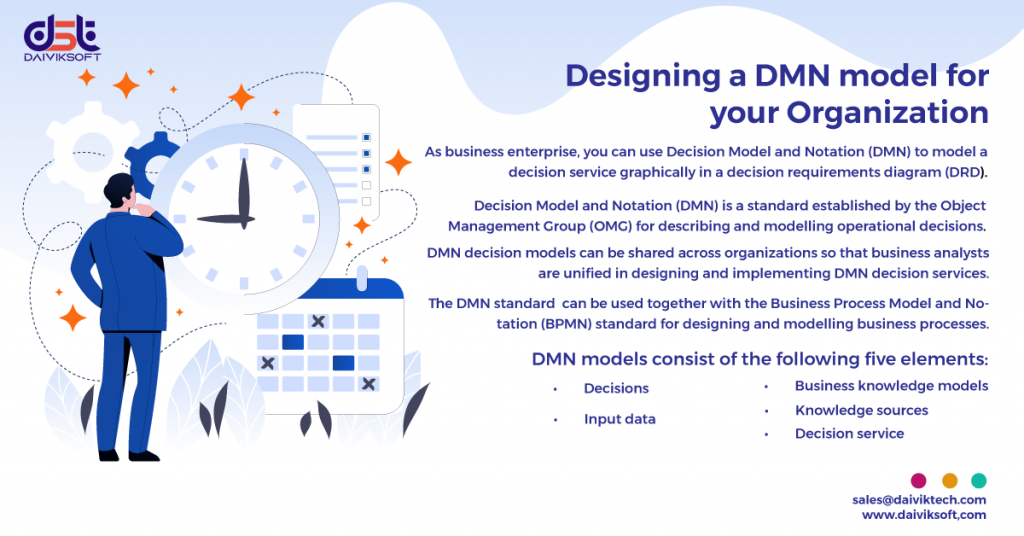As a business analyst or business rules developer, you can use Decision Model and Notation (DMN) to model a decision service for the organization.
Decision Model and Notation (DMN) is a standard established by the Object Management Group (OMG) for describing and modelling operational decisions. DMN decision models can be shared between platforms and across organizations so that business analysts and business rules developers are unified in designing and implementing DMN decision services. The DMN standard is similar to and can be used together with the Business Process Model and Notation (BPMN) standard for designing and modelling business processes.
The DMN specification defines three incremental levels of conformance in a software implementation.
Conformance level 1
A DMN conformance level 1 implementation supports decision requirement diagrams (DRDs), decision logic, and decision tables, but decision models are not executable. Any language can be used to define the expressions, including natural, unstructured languages.
Conformance level 2
A DMN conformance level 2 implementation includes the requirements in conformance level 1, and supports Simplified Friendly Enough Expression Language (S-FEEL) expressions and fully executable decision models.
Conformance level 3
A DMN conformance level 3 implementation includes the requirements in conformance levels 1 and 2, and supports Friendly Enough Expression Language (FEEL) expressions, the full set of boxed expressions, and fully executable decision models.
DMN models consist of the following five elements:
Decisions: Nodes in the model where one or several inputs determine an output based on decision logic.
Input data: Information necessary to determine a decision. This information usually includes business-level concepts or objects relevant to the business.
Business knowledge models: Reusable pieces of decision logic. Decisions that have the same logic but depend on different sub-inputs or sub-decisions use business knowledge models to determine which procedure to follow.
Knowledge sources: External regulations, documents, committees, policies, and so on that shape decision logic. Knowledge sources are references to real-world factors rather than executable business rules.
Decision service: A decision service is a top-level decision, with well-defined inputs, that is published as a service for invocation. The decision service can be invoked from an external application or business process (BPMN).
Daiviksoft Technologies offer strategic guidance on when, where, and how to adopt Decision Management and Decision Modelling best practices and technologies, coupled with concrete tools for becoming analytically-driven.

